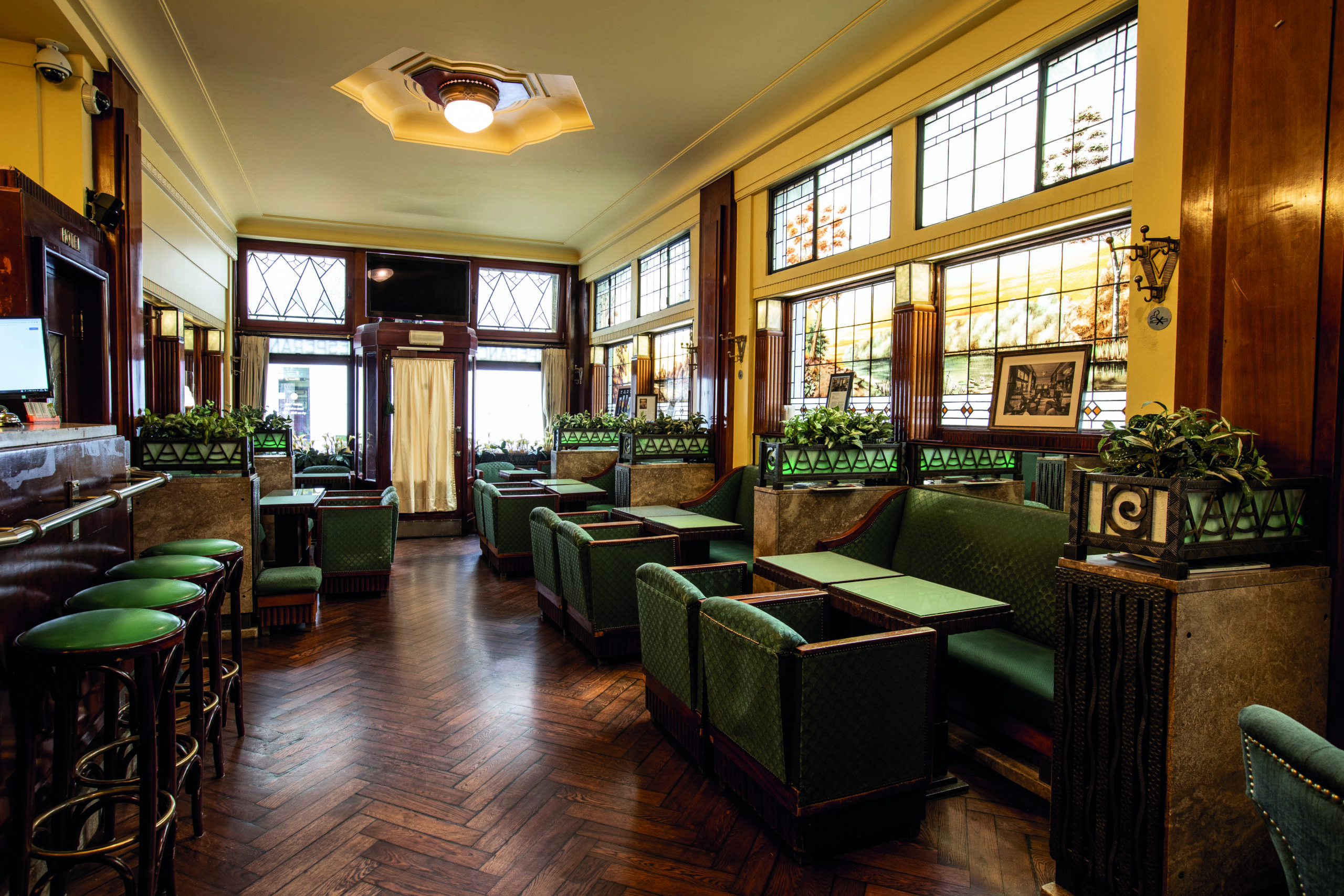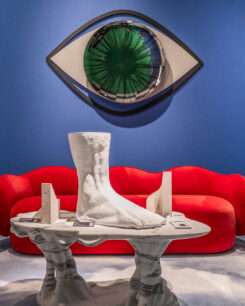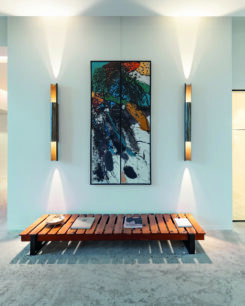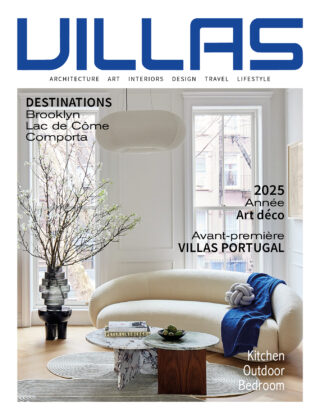With its uncluttered spaces and grandiose volumes, this architectural movement had its heyday in 1925 and was all the rage at the Exposition Internationale des Arts Décoratifs et Industriels Modernes in Paris. By moving away from the curved, sinuous lines of Art Nouveau in favour of geometric forms, the movement gave rise to some of Brussels’ most emblematic buildings. Art Deco also heralded the beginnings of Modernism, a new spirit characterised by greater concern for social progress. This style went on to enjoy something of a comeback in the 1980s with the postmodernist wave.
By extending this invitation to explore our selection of five locations, all open to the public, we hope to incite walkers to keep an eye out for other characteristic facades and imagine their more secret interiors. This year, the BANAD (Brussels Art Nouveau and Art Deco) Festival, which runs over three weekends from 15 to 30 March 2025, offers an unprecedented programme of visits to different parts of Brussels, 60% being Art Deco-related. Plunge back into the roaring twenties between 12 and 18 May when several iconic buildings will hold a host of surprises in store. Keep track of them via the Brussels Art Deco Society, which centralises events for several cultural players.
Villa Empain Fondation Boghossian
Built between 1931 and 1934, in the prestigious Avenue des Nations district, this former private mansion, in the style of a stately home, was very much a status symbol with which its first owner, Baron Louis Empain, was intent on impressing the smart set of the time. Designed by Swiss architect Michel Polak, it today hosts cultural events organised by the Boghossian Foundation, which adopted it as its headquarters in 2010, following its renovation. The works, which began in 2008, were orchestrated by architect Francis Metzger and set out to restore the building to its original state. Inside, the nobility and exoticism of the materials immediately catch the eye: Escalette and Bois Jourdan marble, Bubinga burl wood veneer panels, marbled Palu wood from South East Asia, manilkara from Venezuela and burr walnut. Along with the well-preserved blue mosaic in the bathroom, this temple of modernity is a showcase of ostentatious luxury and also borrows many of its decorative details from African art. Some elements, such as the Marquise lamps, have been faithfully restored.
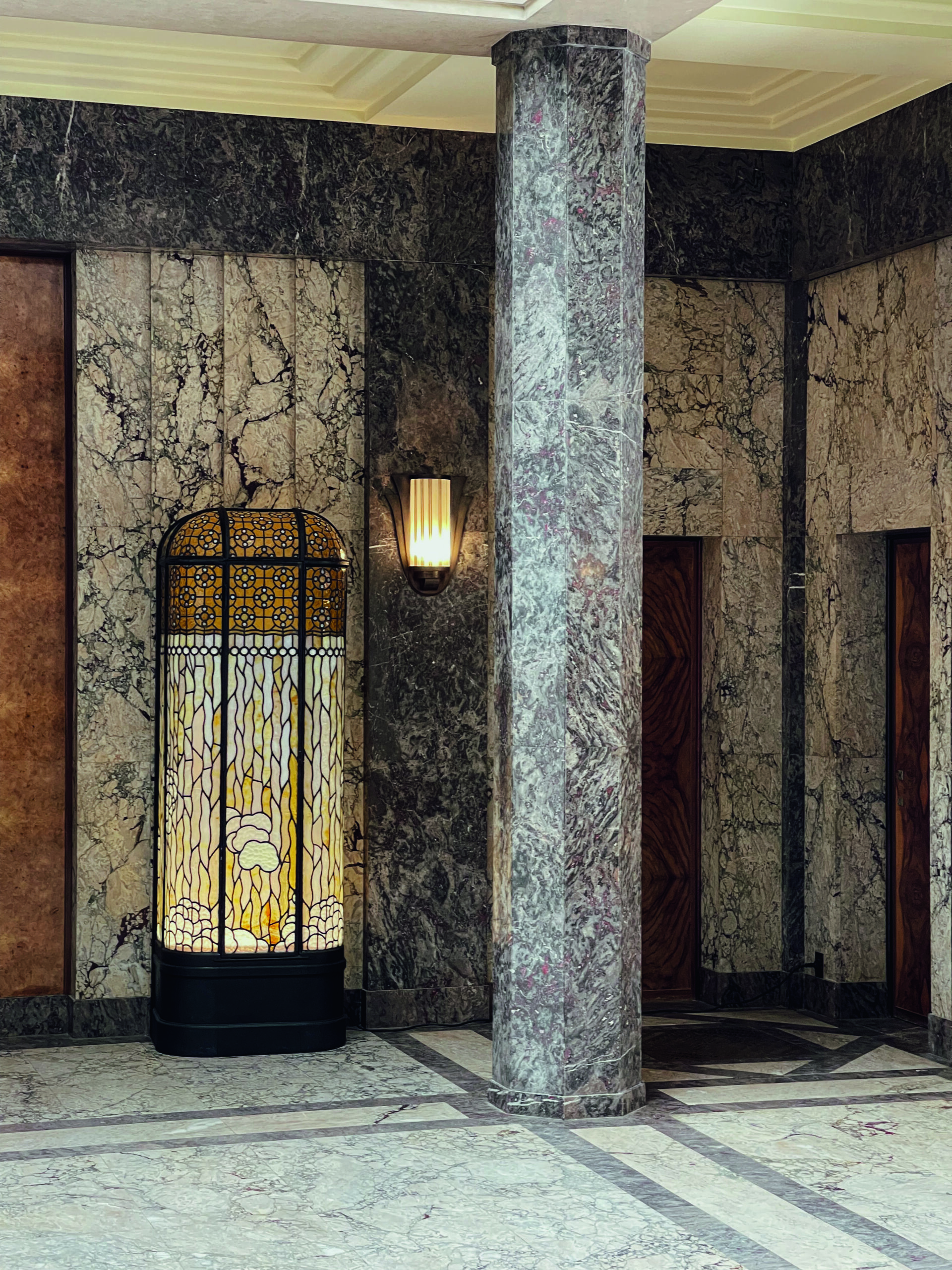
Laetitia Van Hagendoren
On the outside, the walls of the villa, clad in Baveno granite slabs, the gilded brass angle irons and copper roofs have been given a new lease of life. Behind the bronze double-glazed door created by wrought-iron artist Alfred François, which is prominently displayed in the immense entrance hall, you can already catch a glimpse of the outdoor swimming pool. A skylight effectively illuminates and sets off the space. Until 25 May 2025, the Villa Empain is celebrating this pivotal period in the Modernism movement with the exhibition ‘Echoes of Art Deco’, which allows visitors to experience for themselves the lifestyle of the Roaring Twenties. Art Deco was not just an architectural movement, as it influenced all realms of creativity, and interior design in particular. The decorators of the 1930s, future designers, produced furniture and objects of all kinds. From stained glass, ceramics, tableware and silverware to upholstery fabrics and wallpapers, every material and technique imaginable succumbed to the lure of Art Deco (villaempain.com).

Thibault De Schepper
A jewel, combining splendour and rigour, and a double award-winning restoration.
L’Archiduc Jazz and cocktail bar
Near the Bourse, Brussels’ stock exchange, L’Archiduc was designed by architect Franz Van Ruyskensvelde in 1937. Its stunning cast-iron entrance door is adorned with the letter A… for Amour? Or it may well be in reference to Madame Alice, the first owner, who welcomed brokers and their secretaries to her establishment. It was Belgian jazz pioneer Stan Brenders who later made it a landmark, sitting at his grand piano on the ground floor. Inside, the circular mezzanine still welcomes patrons for evening concerts on Saturdays and late afternoon on Sundays. Since 1985, the current owners, Jean-Louis Hennart and Nathalie Dufour, have revamped the decor by commissioning new wall lights in the spirit of Eileen Gray’s designs. They were created exclusively for the venue, based on a table lamp model, to replace the old ironwork fixtures from the late Art Deco period. The benches, meanwhile, are upholstered in velvet with a geometric pattern, a reference to the artist Sonia Delaunay, and designed, it is said, for the Orient-Express (archiduc.com).
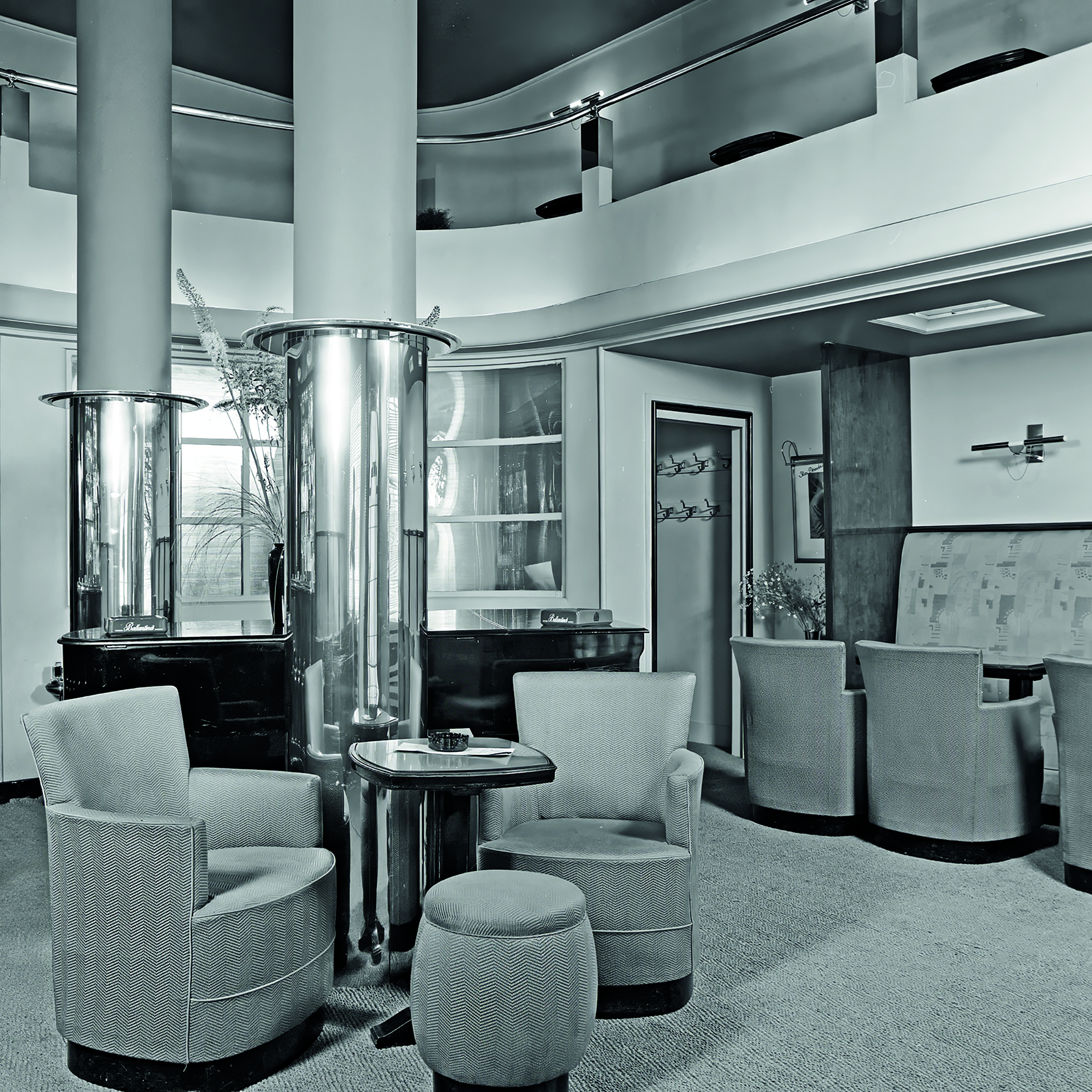
Roger Begine
Maison van Buuren
Museum & Gardens
In Uccle, the home of collectors and patrons David and Alice van Buuren, designed between 1924 and 1928 by Belgian architects Léon Govaerts and Alexis Van Vaerenbergh, bears witness to the style of the Amsterdam Dutch School and French influence. The elementary volumes of its austere facade, enlivened by a clever interplay of bricks, give little clue to the extraordinary collection assembled by its first owners. At the time, the colourful interior was designed by Studio Dominique, a renowned interior designer who conceived it as a total work of art. The 1.2-hectare grounds, laid out to display their natural beauty all year round, were designed by Belgian landscape architects Jules Buyssens and René Pechère. The labyrinth and heart garden, two of the six picturesque elements that make up the grounds, were dreamt up by Alice herself. As for the orchard and the small and large rose gardens, they were plotted to be in complete harmony with the house. Open to visitors all year round, the beautifully preserved interior houses rare furniture, antiques, designer rugs, stained-glass windows, sculptures and an exceptional collection of paintings by great Masters from the 15th to the 20th century, including works by Kees van Dongen, Constant Permeke and Gustave van de Woestijne. To mark the 50th anniversary of this unique museum, a major sculpture exhibition is scheduled to be held from 24 April to 28 September 2025. This commemorative year does not end there, as, from May onwards, a series of artistic events and memorable experiences will be rolled out right up to November (museumvanbuuren.be)
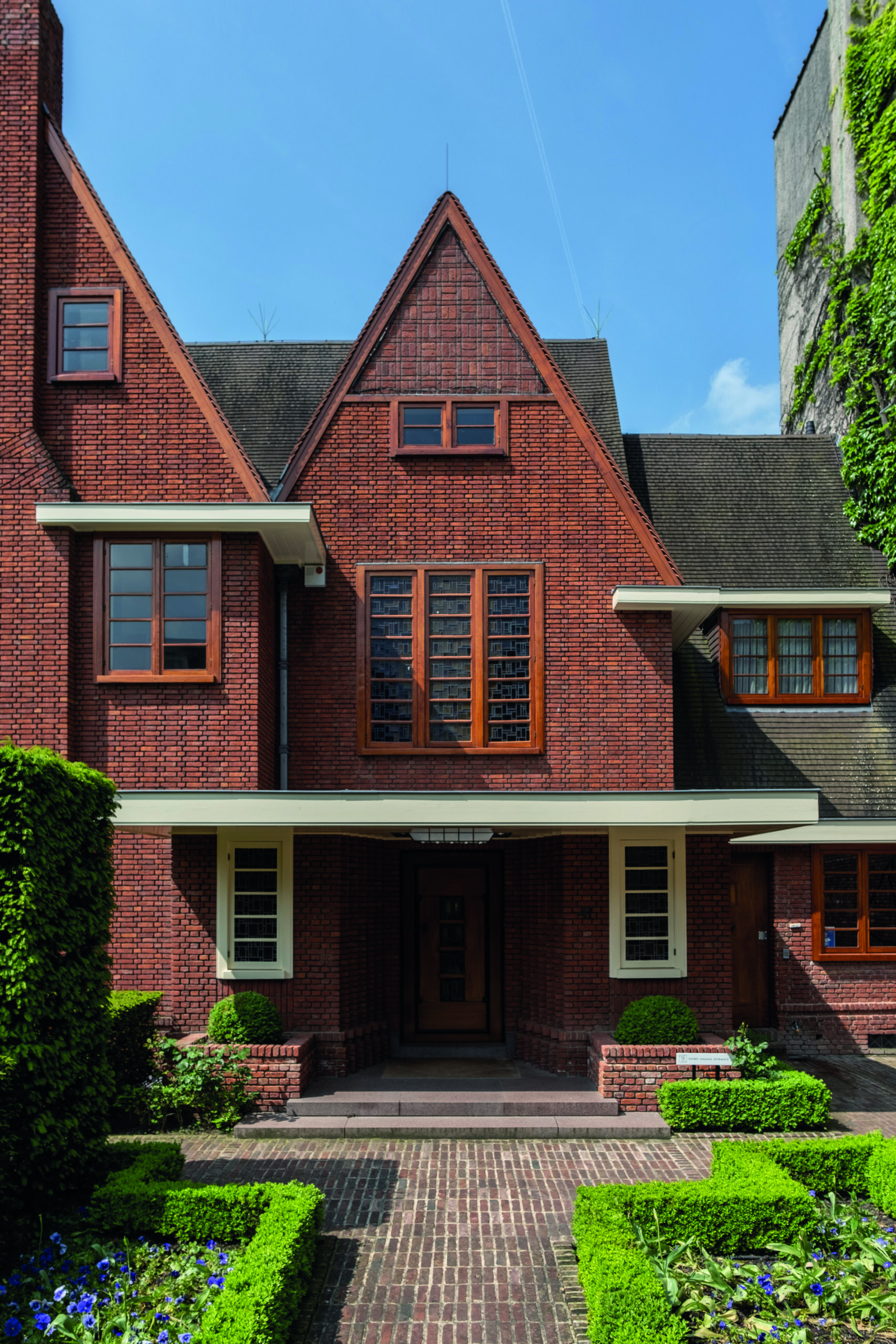
Thibault De Schepper
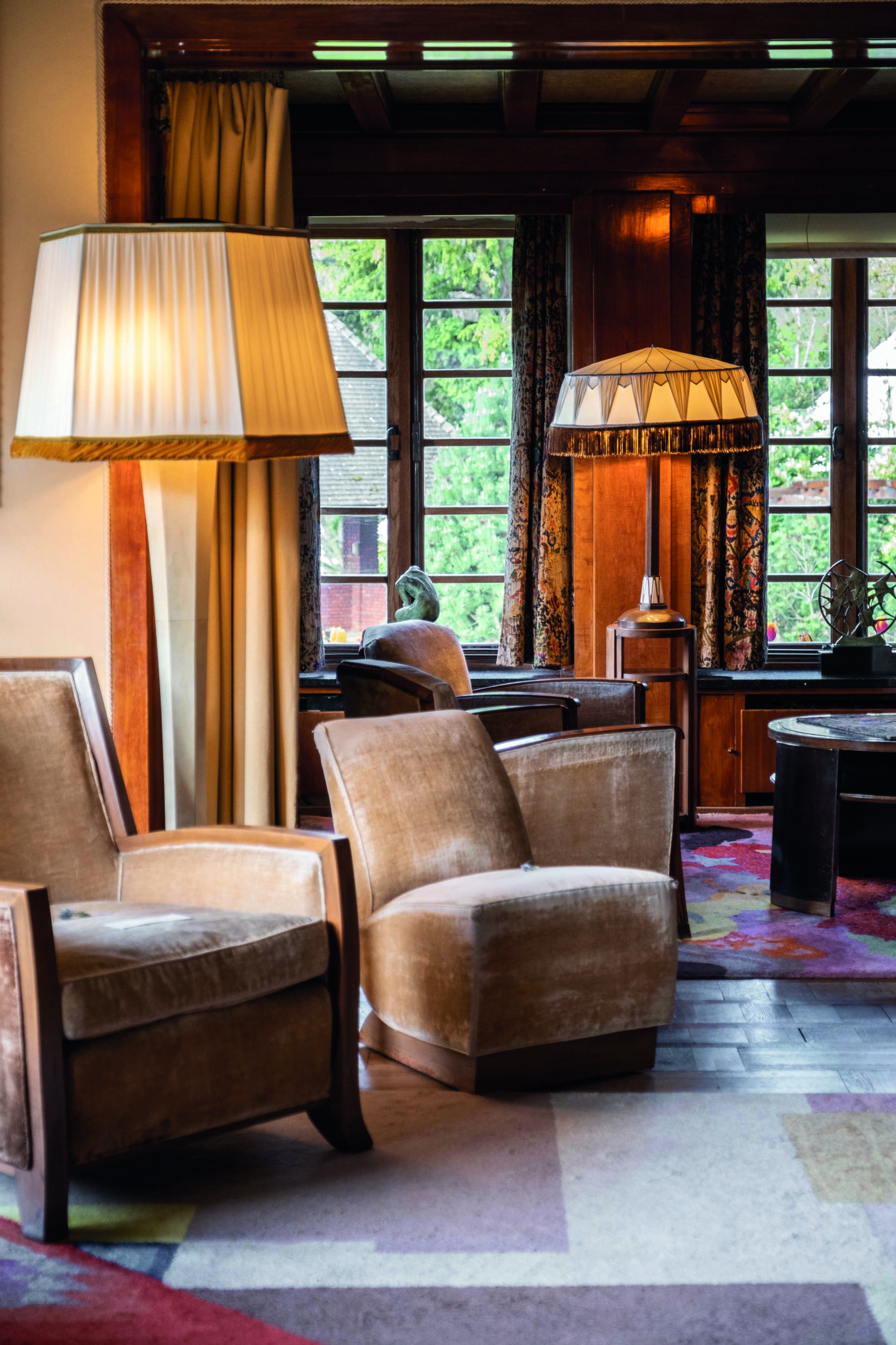
Thibault De Schepper
A jewel, combining splendour and rigour, and a double award-winning restoration.
Near the Bourse, Brussels’ stock exchange, L’Archiduc was designed by architect Franz Van Ruyskensvelde in 1937. Its stunning cast-iron entrance door is adorned with the letter A… for Amour? Or it may well be in reference to Madame Alice, the first owner, who welcomed brokers and their secretaries to her establishment. It was Belgian jazz pioneer Stan Brenders who later made it a landmark, sitting at his grand piano on the ground floor. Inside, the circular mezzanine still welcomes patrons for evening concerts on Saturdays and late afternoon on Sundays. Since 1985, the current owners, Jean-Louis Hennart and Nathalie Dufour, have revamped the decor by commissioning new wall lights in the spirit of Eileen Gray’s designs. They were created exclusively for the venue, based on a table lamp model, to replace the old ironwork fixtures from the late Art Deco period. The benches, meanwhile, are upholstered in velvet with a geometric pattern, a reference to the artist Sonia Delaunay, and designed, it is said, for the Orient-Express
Wiels Centrum voor hedendaagse kunst
Since 2007, the Wiels has been housed in the former Wielemans – Ceuppens brewery. From the outside, you can still make out the former brewhouse, complete with copper tanks and tiled walls. Dating from 1930, this extension by Belgian architect Adrien Blomme, a space today used for the museum’s café and bookshop, has long been a familiar landmark in Brussels’ urban landscape. A fine example of an architecture that was riding the waves of the modernist spirit, it joins the ranks of many other numerous ocean liner-style buildings (wiels.org).

Andrea Anoni
L’Espérance
Café, brasserie and hotel
This establishment, designed by Léon Govaerts in 1930, owes its name to its dominant green colour. The building’s frontage, located on rue du Finistère, is framed by grey marble and translucent geometric stained-glass windows. The revolving door is original. Inside, the decor is virtually untouched: stained glass windows painted in shades of brown, depicting lakeside landscapes, a bar-counter, lighting fixtures set into the woodwork, curved banquettes and planters. One of the six rooms is in the Art Deco style. The service doors for the Office, Hotel and toilets with the inscription “Cour”, were made by Twyfords. Once a haunt for romantic dates, the atmosphere is still hushed and intimate, making it the perfect place to go for a drink, with the most honourable intentions, of course! (hotel-esperance.be)
